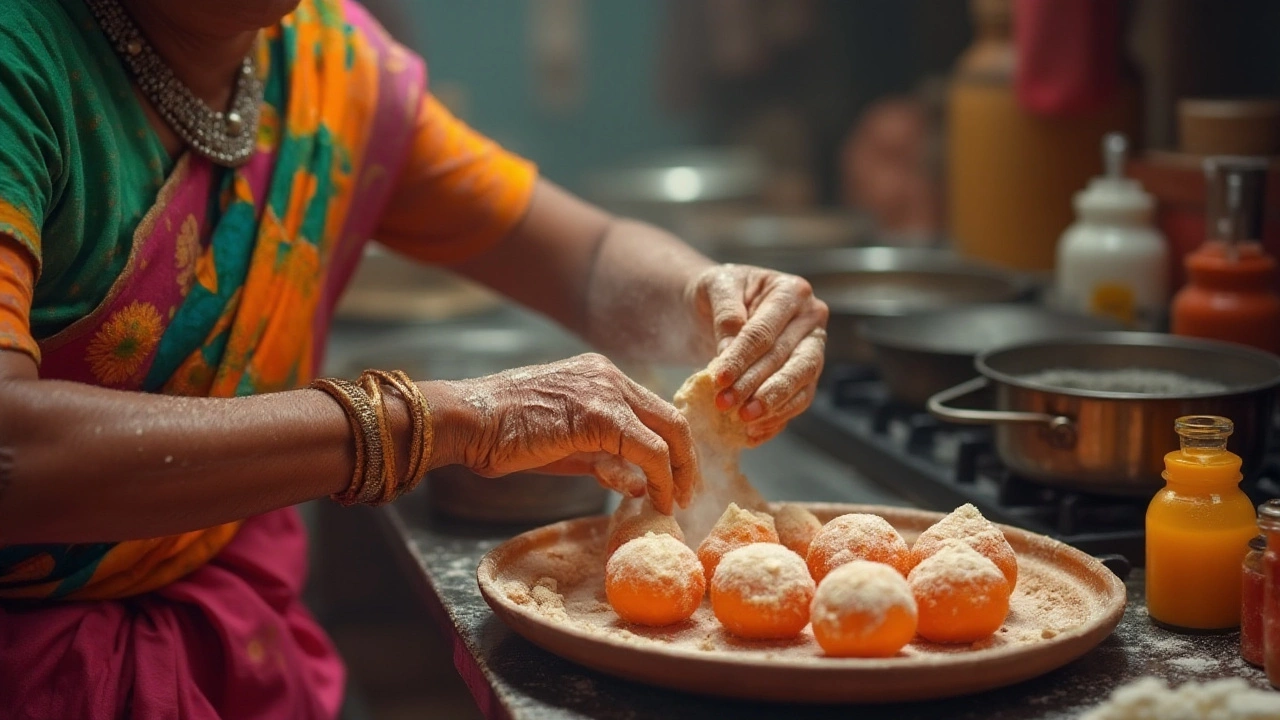Sweet Recipes – Your Guide to Indian Desserts
If you love a good sweet but don’t want to overdo it, you’re in the right place. Here you’ll find easy make‑at‑home ideas, health‑friendly swaps, and the stories behind India’s most beloved mithai. Grab a cup of chai and let’s sort out which treats fit your cravings and your diet.
Healthy Sweet Picks
Not all sweets have to be sugar bombs. The article “Which Indian Sweet Is Healthy?” breaks down low‑sugar options like jaggery‑sweetened payasam, roasted chickpea laddus, and fruit‑based rasgullas. Portion size matters, so aim for one or two bite‑size pieces. Swap refined sugar with jaggery or stevia when possible – the flavor stays rich, and the glycaemic spike drops.
For those watching their weight, “Best Indian Curries for Weight Loss” also mentions a few light desserts that use yogurt, soymilk, or coconut water as bases. Mixing fresh mango with a splash of lime gives you a naturally sweet treat without added sugar.
Classic & Ancient Sweets
India’s sweet heritage stretches back centuries. “Ancient Indian Sweets: The Fascinating Origins of India's Oldest Mithai” talks about the first recorded sweet made from jaggery and sesame. You can try a simple version at home by roasting sesame seeds, mixing them with melted jaggery, and shaping into tiny bars.
“India's Most Popular Sweet: Why Gulab Jamun Rules Every Occasion” shows why that soft, syrup‑soaked ball remains a party favorite. The secret is a quick‑mix batter of milk powder, a pinch of baking soda, and a short fry to keep it light. Soak in rose‑flavored sugar syrup and you’ve got a crowd‑pleaser in minutes.
For a taste of tradition, “Why Do Muslims Love Sweets?” explores the role of desserts during Eid and Ramadan. Recipes like seviyan (vermicelli pudding) and sheer kurma are perfect for festive gatherings. They rely on milk, nuts, and a touch of cardamom – no need for heavy creams.
Whether you’re after a guilt‑free bite or a classic treat, the sweet recipes on this page give you the tools to decide. Pick a health‑focused option for everyday snacking, or dive into the ancient flavors when you have time to celebrate.
Got a favorite family sweet? Try tweaking it with the tips above and see how a small change can make a big difference. Happy cooking!
Discover the Key Ingredient in Delicious Indian Sweets
Indian sweets, known for their exquisite flavors and rich textures, often revolve around one key ingredient: sugar. Different types of sweets have unique variations, yet sugar remains a dominant player in the equation, providing sweetness and structure. From the humble gulab jamun to the luxurious peda, understanding the role of sugar highlights its essential part in Indian confectionery. Explore diverse recipes and learn how this simple ingredient brings magic to celebrated treats.
